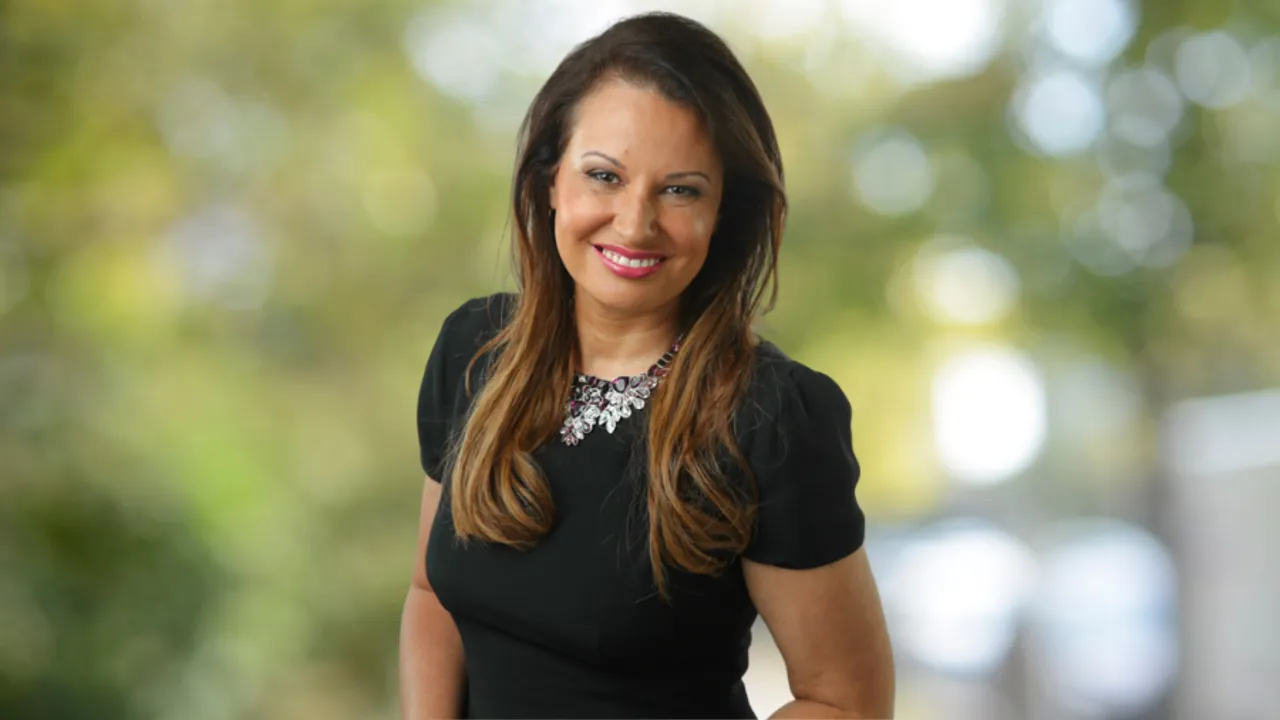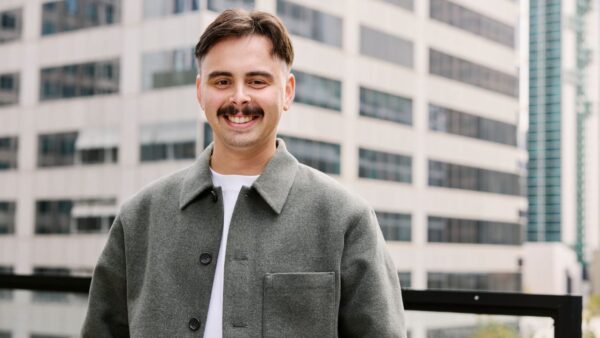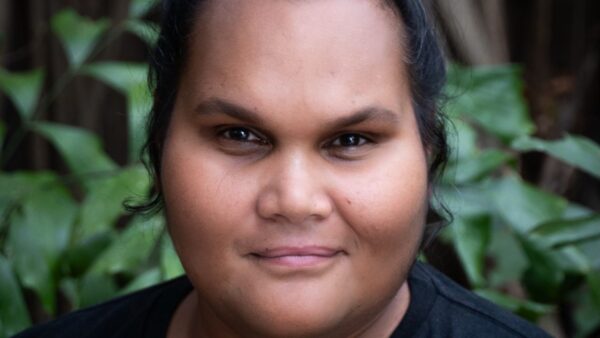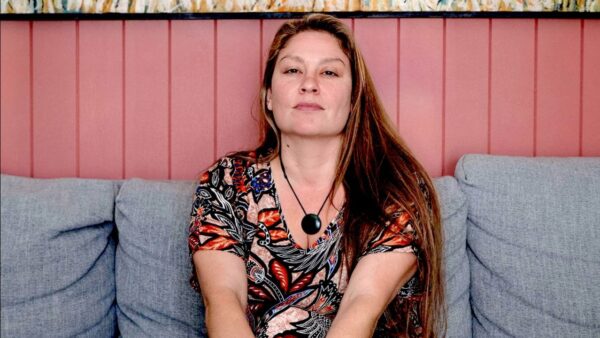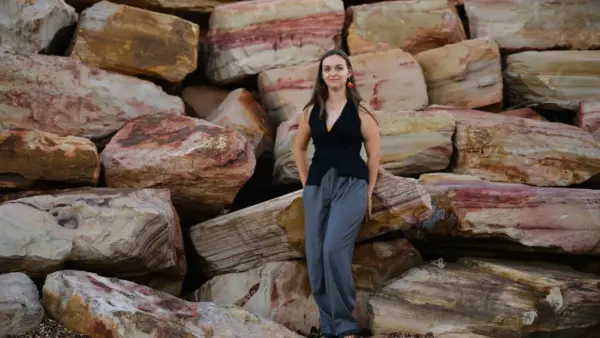Larissa Behrendt AO is a Euahleyai / Gamillaroi filmmaker based in Sydney, New South Wales.
Larissa started her career as a lawyer in New South Wales and became the first Indigenous Australian to graduate from Harvard Law School completing a Master of Laws and a Doctor of Juridical Science. Throughout her law career she was a passionate advocate for Indigenous rights and over time her understanding of how to be an advocate developed, leading her to explore other ways to share stories with audiences, and today she is an award-winning author and filmmaker, Distinguished Professor and the Associate Dean (Indigenous Research) at the Jumbunna Institute at the University of Technology, Sydney. In 2020, she was awarded an Order of Australia (AO) for her work in Indigenous education, the law and arts.
Throughout her filmmaking career she has written and directed several feature documentary films including You Can Go Now, Araatika! Rise Up, the AACTA Award winning Maralinga Tjarutka, After the Apology, for which she won the 2018 Australian Directors Guild Award, Innocence Betrayed and One Mind One Heart, which recently premiered in Australia. She directed and co-created documentary mini-series The First Inventors, which was the first collaboration between Australian public broadcaster National Indigenous Television (NITV), and Australian commercial broadcaster Network 10. She has also written for hit Australian narrative series including Total Control and The Heights. Through her production company Lavarch Productions, which she runs with her husband Michael Lavarch, she is drawn to stories that make a strong social justice statement and celebrate the resilience of the human spirit.
Below she speaks about how she entered her filmmaking career, developing her craft as a filmmaker and taking First Nations stories to a broad audience.
You have worn many hats throughout your career. You started as a lawyer, and have gone on to be an academic, and passionate advocate for the rights of Aboriginal and Torres Strait Islander people, as well as an award-winning author and filmmaker. Can you tell us a bit about what motivated you and how you went about making the transition into filmmaking?
Larissa Behrendt: I’ve always been really driven by the idea of social justice and Indigenous rights, and also creating a deeper appreciation of Indigenous culture. I originally thought I would do that by being a lawyer and as I developed my career, I realised that running cases is a really narrow way of making change. I moved into academia because I was interested in bigger, more structural law reform, but then came to realise over the years that the process of storytelling and engaging hearts and minds in lived experience was actually the most powerful way of setting the scene for important reforms, deepening understanding and facilitating a reconciliation.
So, I don’t feel I’ve gone from one career to another. I feel like I’ve just deepened my understanding of what it means to be an advocate and moved from the idea that you always speak for other people when you’re advocating, to the idea that you can be a really powerful advocate if you create space for other people to tell their stories.
You have written and directed several documentaries, including You Can Go Now, Araatika! Rise Up, Maralinga Tjarutka, After the Apology and Innocence Betrayed. What do you enjoy most about documentary filmmaking?
There are lots of things I love about documentary filmmaking. I love that it is such a powerful way to show lived experience to a broader Australian audience, who might not even believe it happens. The levels of racism that people might suffer and the levels of injustice. I think documentary is a really powerful way of showing truth and engaging people in a way that a scripted story or a fictional story can’t do. I love the way that it allows you to take people who’ve been really marginalised and often silenced by systems and you provide a space in which they can reclaim their story and tell their story. I think After The Apology is a really good example of how you can do that.
I love that documentary allows me to work with really strong Aboriginal women and great Aboriginal men. It provides an opportunity for me to show a broader audience the strength and resilience I see in Aboriginal people and communities rather than just allowing the narrative or stereotype of us as victims and always disadvantaged and always in a deficit model. I can show self-determination in action, that often bring in elements of people who have worked to change the system or working for change. I also love that it gives you a way in which you can deepen the understanding of Aboriginal culture. It’s really hard to show when you’re just lecturing people but in documentaries audiences can see it in action.
When I worked on The First Inventors, I was excited to take that story to a broad audience. It was the first collaboration between Australian public broadcaster National Indigenous Television (NITV), and Australian commercial broadcaster Network 10 and I had so many people tell me they loved seeing their story on a commercial broadcaster. Having the ability to take Indigenous stories into the commercial world was something that was really exciting.
How has your approach to documentary filmmaking developed over time?
I think one of the things that I’ve done with the craft of filmmaking as a filmmaker is I’m much more attuned now to shaping the story to the voice of the people or the person that I’m telling the story about, rather than trying to impose my own voice and my own point of view. For example, in Maralinga Tjarutka I really tried to capture the tone of the way people spoke and their grace and their dignity. With One Mind One Heart the Yolgnu people also have a similar grace and generosity with which they speak, and trying to capture that in the tone of the storytelling is something I’ve developed along the way. I think over time you just try and develop that craft of capturing the authenticity of those voices and to then put them in that broader historical context – bring in the archive, bring in experts – while making sure it’s still story driven and it all feel seamless. They’re elements of storytelling that I think you develop over time.
Another thing I love about documentary filmmaking is being able to highlight Indigenous experts. In One Mind One Heart I use all Indigenous experts unless they’ve got a role in the film, like Clare (Wright), because they were part of the story. I’ll always use Indigenous lawyers or Indigenous historians.
Your work focuses predominantly on First Nations stories and social justice. What draws you to tell these stories?
Sometimes I’ve been drawn to the stories because they’re really deeply involved with my work like with Innocence Betrayed or the women in After The Apology, who were all women that we’d worked with or been allied with in some way with the work I do at the University of Technology Sydney. So sometimes the stories are really close to me.
Other times, the story finds me and I always ask myself, ‘Is this my story to tell?’ Often that will really depend on how I can build the relationships with the people I’m telling the story about within those communities. With Maralinga Tjarutka, for instance, I went and met the community and talked to them and listened to them about how they wanted their story told to get a sense of if I was the right person for them to trust. I was also making sure I felt like I could bring my craft to help them tell the story the way they wanted to. It was a bit the same with One Mind One Heart.
I met Clare Wright, who was writing Näku Dhäruk: The Bark Petitions (a book about the Yirrkala Bark Petitions), at an airport. She told me the story and said it would be a great film and I agreed. I put her in contact with Michaela Perske, the producer on the film, but I wasn’t totally convinced it was my story to tell until I had a real sense of the Yolgnu story. It was also Yananymul Mununggurr’s story with her father that really drew me to it. I didn’t know her personally, but I knew her as an advocate and as a strong voice for her community because of my work in the Northern Territory.
That story of a daughter’s tribute to her father and the achievements and legacy of the generation before you – I felt that was the thing that drew me in. I’ve kind of lived that story with my relationship with my own father – I’m still exploring that – and I thought that’s something that I can really contribute to. So, I do feel like sometimes the story tells you that it’s yours to tell.
Other times I’ve just had a real drive that there’s something that I’m seeing or people whose stories I’m seeing that are so important to share with a broader audience.
You have also worked on several critically acclaimed Australian narrative productions including writing on the second season of Total Control. What is the experience like jumping between factual and narrative content?
I love them each for the unique storytelling mechanism each has. I’m not one of these people who sees documentary as a way into the world of scripted. I have a deep love of what documentary can achieve and I love its truthfulness, and I love the way it can take you into a real world. So, I always feel like those stories need their authentic voice but with scripted I love having the ability to dive into drama and to think about thematics or stories that I do know that could weave into or enrich the story.
I think the other real difference is that, as a documentary maker I’m usually in the sole writer and director, so it’s very much my vision and my creation in terms of how I’m going to approach it. Whereas what I love about the scripted story space is that it is completely collaborative. You are there as a group of writers, even with your own episode. It’s a group effort – you have a very strong voice from whoever’s leading the room and the showrunner.
It is a lovely mix of things and I do appreciate that also being an author where you basically write in a in a silo until your books finished and then you might give it to your publisher or your editor. That is such a sole business, so I actually really love the collegiality and the exchange of ideas and the being in the room. It’s such a joyous experience. I sometimes pinch myself that it’s actually a job. It’s a lot more fun than running a court case I can tell you!
I also love the ability to get to an even broader audience and bringing real, authentic blackfella views into what’s on the screen like with Total Control or Top End Bub. I’m old enough to have grown up in an Australia where we didn’t see Aboriginal people on screen or working in the sector, so I really appreciate now that the industry is so strong with Indigenous creatives, and it is so strong in terms of the content that we can bring to the screen. It feels like a real gift that there are now different ways we can tell First Nations stories and different ways we can show a non-Indigenous audience the diversity of Indigenous culture and perspectives.
One Mind One Heart, a documentary which you wrote and directed premiered at Adelaide Film Festival 2024 and recently screened on NITV and SBS in Australia, traces the historical journey of the Yirrkala Bark Petitions, documents which are pivotal in the recognition of Aboriginal rights in Australia. Can you tell us what drew you to this story? You mentioned meeting Claire at an airport..
Claire (Wright) and I had both been at the Mildura Writers Festival, and we were just waiting for a flight and started talking. I didn’t know her very well, and she mentioned that she was writing this book and had this story. I did think immediately the repatriation issue for the Yirrkala Bark Petitions was really important and I was really keen to help her find a home for the story. So I put her in touch with Michaela Perske who I’d worked with on After The Apology and I love working with Michaela.
She’s mentored through a lot of First Nations filmmakers, she really gets the space and as a producer she has a really good appetite for risk. Michaela and I had a few chats about it, and I told her I wasn’t sure it was for me – I’ve got a lot on my plate, so it’s got to be something that really appeals to me – but I appreciated Yananymul’s role in it, and that’s what spoke to me.
I’ve recently been reconnecting with my own culture, and I only became a native title holder in the last three years, so I’ve spent a lot more time on my own country. I’ve been thinking about my own cultural regeneration and my father’s role in rebuilding the Euahlayai language, and his role in collecting oral stories that showed our continual connection to Country. I’ve started to think more deeply about that father-daughter relationship and to me, as soon as I could see that Yananymul and her father were at the heart of this film, that spoke to me.
It felt to me like the soul of the film was the drive of a daughter to honour her father and her father’s legacy. And to do that while he was still alive was incredibly moving. It was moving to kind of bring it to life on the screen. Sadly, her father passed after we finished filming and before it was released, so the film is dedicated to him. When I see his name come up on the screen, I still feel how important it was Yananymul to tell the story in the time frame that she did.
There are always things that you can be drawn to intellectually as a storyteller, but there’s always something deeper and more personal that’s in there. Sometimes you might not realise what it is when the story first comes to you, because it’s so instinctive. When it comes, you’re like ‘yes, that’s the story, that’s the story for me.’ Sometimes there is a bit of your own self-reflection and your own realisation, and I really feel like, as much as One Mind One Heart was about Yananymul telling her part of the story, I was really drawn to learning from her how she was honouring that generation and how that also related to me.
What advice do you have for people looking to break into the film industry?
The first thing is it’s really important to take the craft seriously. I had a successful career as a lawyer and an academic, but I didn’t presume that that would mean that I could just swap into the industry at the similar level. As a professor, I went back to school and did two years at film school to learn the craft of script writing and directing. I went from one successful career to one where I was really happy to be writing any script that I could. I wrote scripts for Central Australian Aboriginal Media Association (CAAMA), for public service announcements. I treat it as a craft and was happy to go from the bottom up.
I also think it’s important to take all the opportunities that Australian funding bodies like Screen Australia and Screen NSW have around mentoring or attachments. I’ve had great experiences doing attachments and mentoring opportunities and I’ve been really impressed by how many there are for filmmakers, especially First Nations filmmakers. I really encourage people to look out for those opportunities and put your hand up for them.
It’s also important to find what the stories are that are yours to tell, and finding your voice as a storyteller. You can be really influenced by the directors and storytelling that you like, but at the end of the day, you can’t be a mimic. You must find that authenticity within yourself and sometimes that will only come with practice.
There were things from my previous career that did help me. One thing with law is you do have to understand people. You’ve got to think about how you’re going to cross examine someone, or what kind of witness they’re going to make, so there’s a bit of psychology that you learn along the way. So you need to find ways like that in developing the craft where you’re understanding people. That involves continual learning and listening and finding your voice in how you tell a story.
